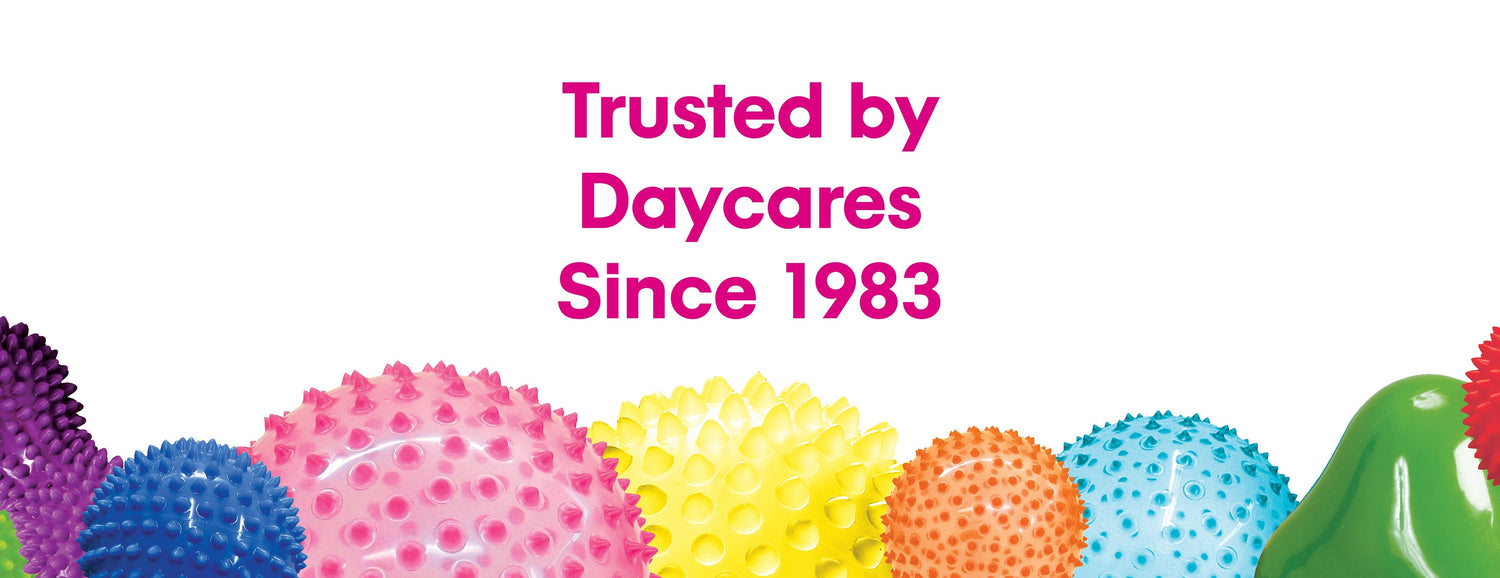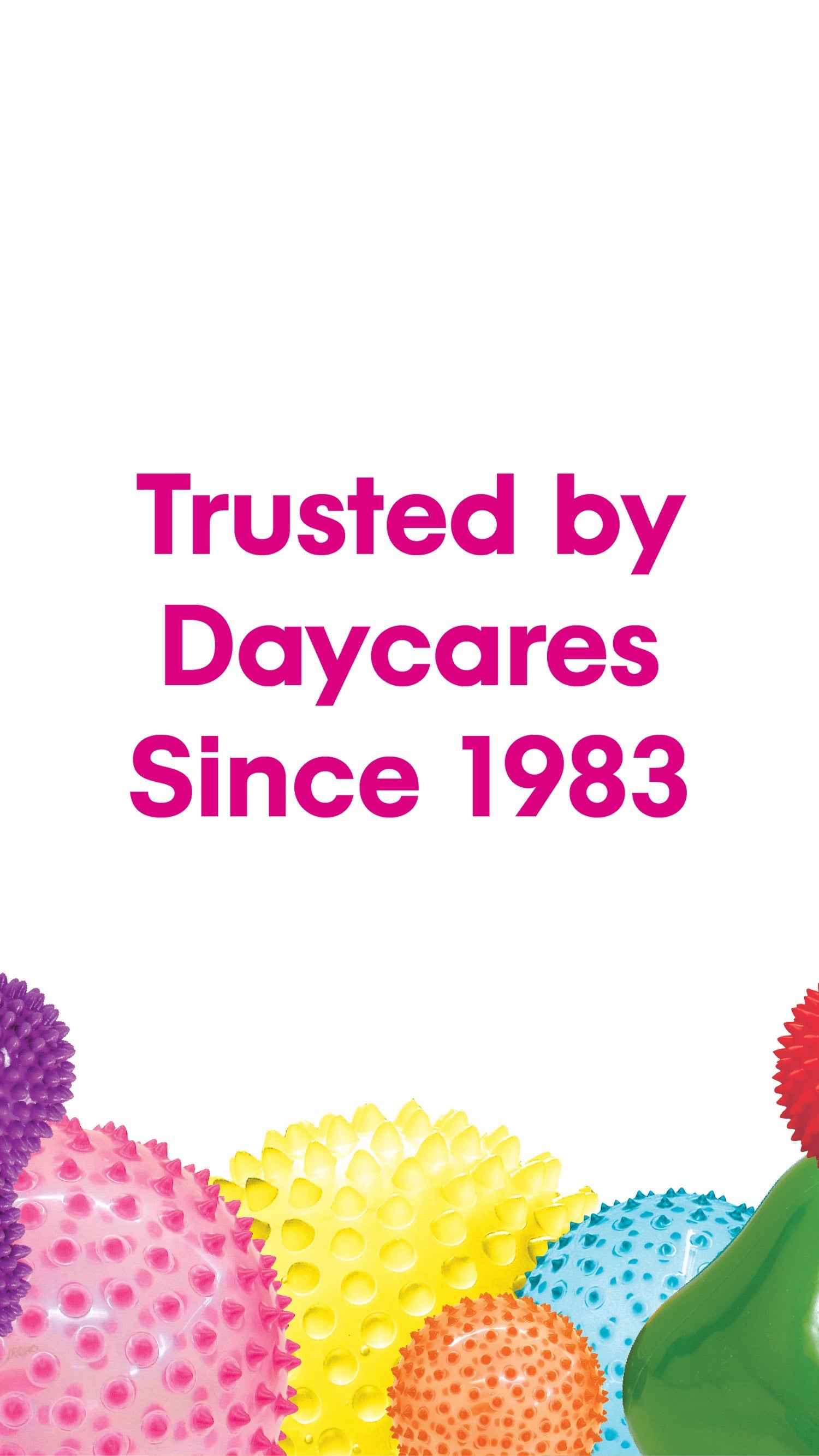Sensory processing is how your brain registers, interprets and uses information from the sensory systems. When a baby’s senses start to develop and mature, they are gradually able to process what’s happening within their brain, and make it all make sense.
For example, early on a newborn isn't able to see certain shapes. The more they are able to engage the sight senses, the more opportunity their brain will have to process what they are seeing and give meaning to it.
Why is sensory processing important?
How we process our senses has a huge role in how we function. It influences how we learn, feel, and develop. Our environment is constantly throwing stimuli at us, and being able to appropriately process and respond to those stimuli is essential for moving through life.
As you may know, we have five primary senses: smell, taste, sight, hearing, and touch, and two lesser known senses: vestibular and proprioception. Everyone responds in different ways to each sense, so it’s important to be aware of your child’s individual threshold for engaging with each. Understanding behavioral responses could further help you identify ways to ensure their needs are met.
By understanding sensory processing, we can help tailor routines specifically for our children, to address their needs and create an environment where they can thrive.
Why is it important to know my child’s threshold for stimulation?
According to Dr. Winnie Dunn, an occupational therapist who studied how children react to sensory stimulation differently, a neurological threshold “refers to the threshold for response to a sensory stimulus and is described as ranging on a continuum from low to high.” Meaning, the point at which a child will respond to sensory information.
Dr. Dunn’s research shows that children have different thresholds to sensory stimulation. Using sound as an example: some children may love loud music, some may not react to it, and some may actively avoid it. She created a model to break down how people process sensation differently called Dunn’s Four Quadrant Model of Sensory Processing.
The model is broken down into two parts: our neurological threshold and our behavioral response.
When it comes to sensory processing, neurological thresholds range from high to low.
A high threshold is when we need more stimuli to react to a sense. An example could be if a child needs you to speak louder to them to get their attention. A low threshold is when we’re extremely sensitive to a sense. A child with a low threshold for sound may be easily distracted by any noise. They also may not like being in a crowded room where lots of people are speaking.
When it comes to behavioral responses to stimuli, people respond in both passive and active ways. Those with passive tendencies respond internally—meaning they may be able to easily move past it or not do anything to change their environment. Those with active tendencies will do a behavior to adapt or respond—like turning down the music or leaving a room they’re uncomfortable in.
How Do I Know If My Child Has a Sensory Processing Issue?
Most people can process senses without even thinking about it. We engage in activities that we like, which engage our senses “just enough” to make us happy and keep us interested and engaged.
But, we all have different thresholds for stimulation. For some senses, it may be on the higher end. For some it may be on the lower end. For children with a sensory processing disorder, they tend to be on either extreme.
Sensory processing disorders become apparent when a child’s patterns aren’t compatible with their day-to-day activities. Issues could be seen at school or in social settings.
Dr. Dunn’s research shows that children who have difficulty processing sensory information might have one of the following four types of responses to senses from the environment:
High Sensory Threshold
Poor Registration
Children with poor registration need more stimuli to react. They can come off as oblivious and disorganized, and tend to rush through activities. They also are constantly searching for things they think they’ve lost. They may not react to a whisper and need to be spoken to loudly to get their attention.
Sensation Seeking
Children with a high sensory threshold are always on the move. They will sometimes seek extra stimulation by doing things like chewing on their shirts or fiddling and touching everything around them, to the point of annoying others.
Low Sensory Threshold
Sensory Sensitivity
Children who are sensitive to stimuli struggle to block out stimuli, and may get overwhelmed and distracted easily. Multi-tasking is near impossible, and they may be picky, simple eaters. These children may have trouble in a crowded room with lots of people talking, and are very sensitive about people invading their personal space.
Sensory Avoiding
These children may be withdrawn, and don’t like trying new things. They react strongly to unexpected noises, don’t love being touched, and can be sensitive to criticism. They may thrive with routine and avoid participating in unpredictable situations.
What Do I Do If I Think My Child Needs Support?
Professionals exist to identify and support children and adults with sensory processing issues.
Understanding your own sensory preferences can also help better understand the needs of your child. The knowledge can be useful for planning ways to ensure your child has successful, satisfying, and comfortable experiences.



